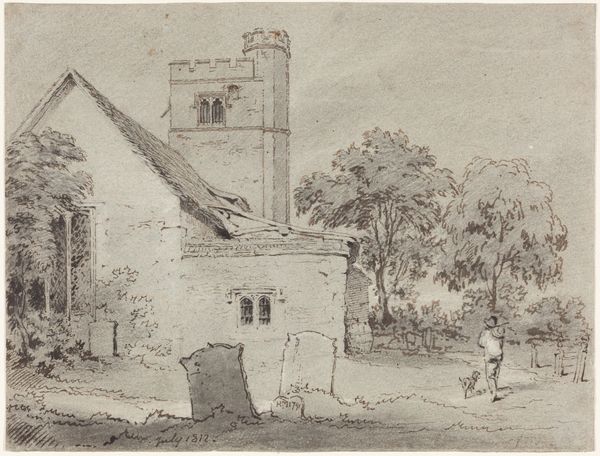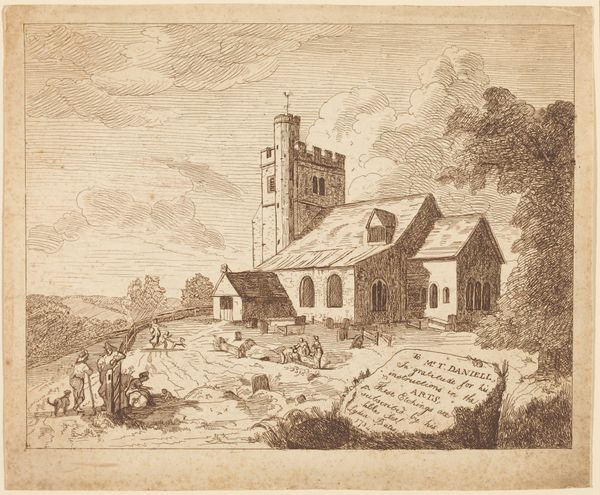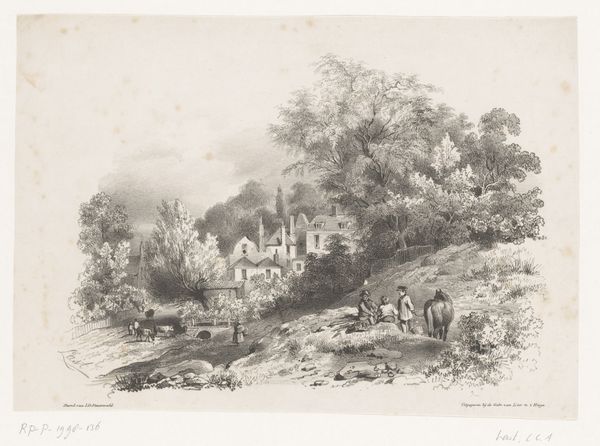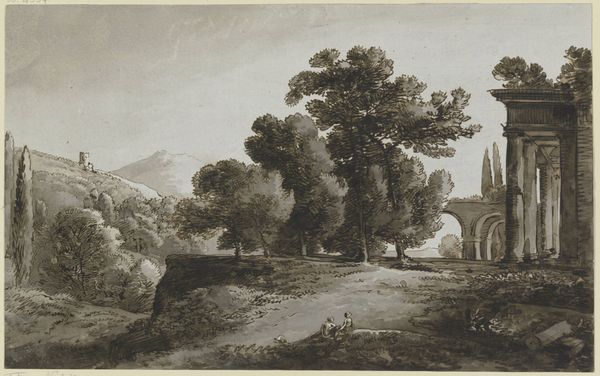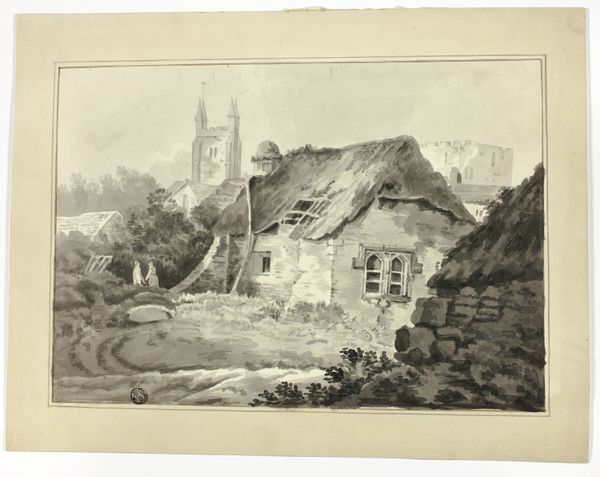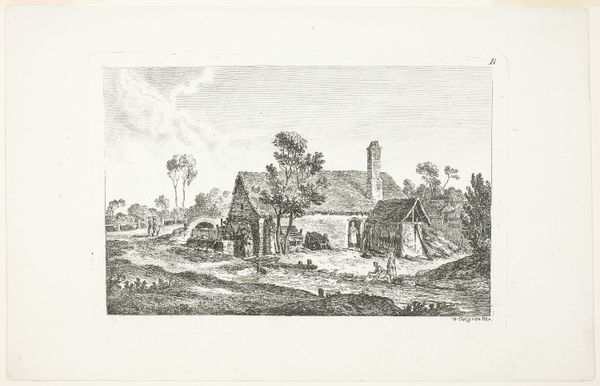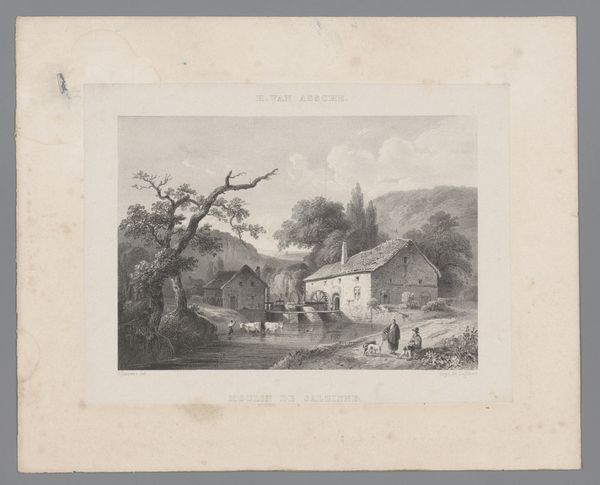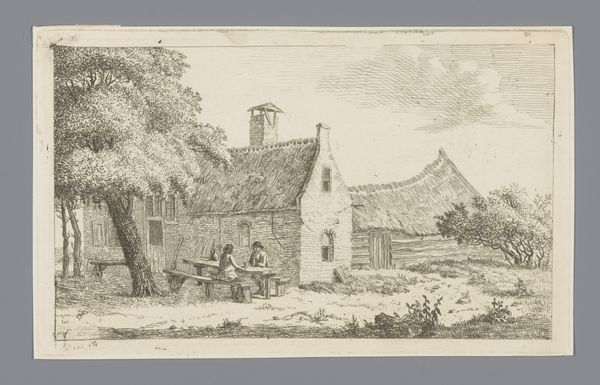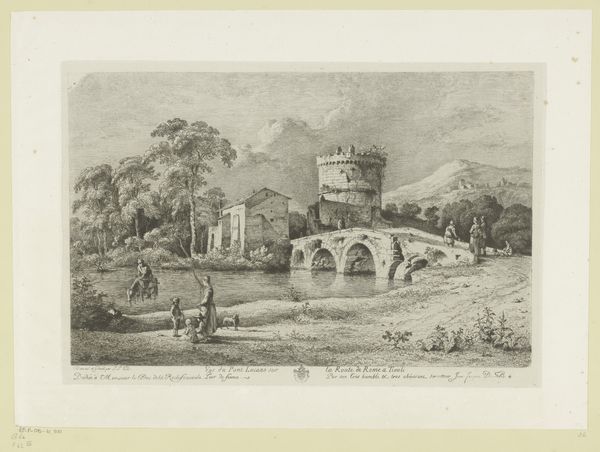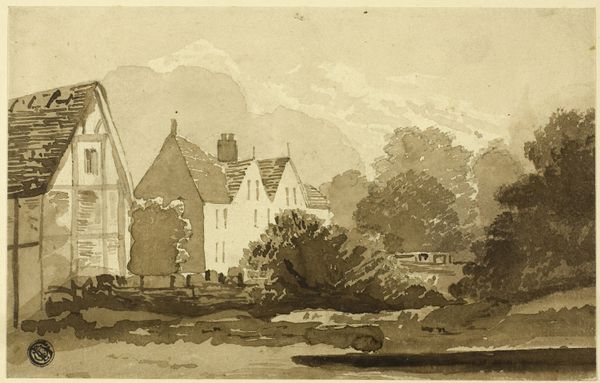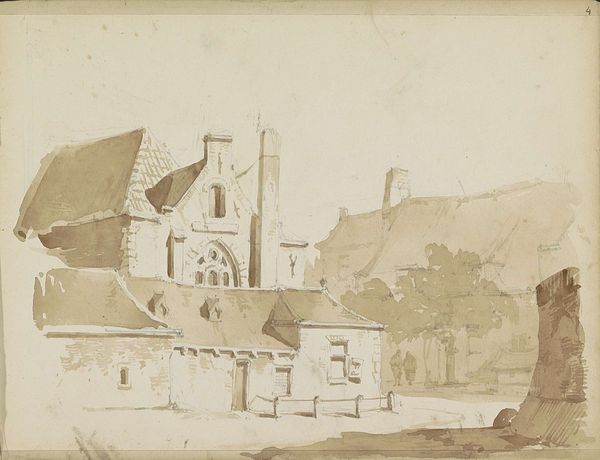
drawing, print, paper, ink, pencil, chalk, graphite
#
drawing
# print
#
landscape
#
paper
#
ink
#
coloured pencil
#
romanticism
#
pencil
#
chalk
#
graphite
Dimensions: 228 × 336 mm
Copyright: Public Domain
Curator: This is George Augustus Holmes' "Wenlock Abbey, Sharpshire," an ink, graphite, and chalk drawing held at The Art Institute of Chicago. Editor: It evokes such a strong feeling of wistful nostalgia. The sepia tones create this soft, diffused light, really highlighting the textures of the stonework and the foliage clinging to the ruins. It’s beautifully balanced with the figures adding a human element without overpowering the scene. Curator: Yes, these kinds of picturesque ruins became incredibly popular in the late 18th and early 19th centuries as symbols of England's rich, albeit tumultuous, history, in particular undercurrents surrounding the dissolution of monasteries and their appropriation under the crown. There's something to be said for how a place like Wenlock Abbey could simultaneously embody cultural heritage and dispossession. Editor: From a formal perspective, note how Holmes has used line and wash to differentiate textures—the delicate touch of the foliage versus the weightiness of the stone. The varying thicknesses of line create depth, too, drawing your eye into the composition, lingering at the crumbling archway and then down to the small grouping of people. Curator: Absolutely, this composition plays into the larger cultural obsession with ruins. The romanticization, turning places of violence into sources of reflection and leisure, really speaks to the ways artists contributed to the aestheticization of history for consumption by a particular class of Britons. This allowed for an engagement with a turbulent past while managing a degree of social and historical separation. Editor: Indeed, Holmes seems more concerned with atmosphere and pictorial organization than historical accuracy here. He’s really orchestrating visual poetry rather than documentation. That careful arrangement of tones creates an incredible illusion of space within a relatively shallow plane. It all harmonizes so perfectly, giving the work such an evocative presence. Curator: A beautiful distillation of romantic ideals around the ruin, a place both haunted and celebrated in British culture. Editor: A poignant snapshot, really showcasing how art can transform mere decay into a spectacle of timeless beauty.
Comments
No comments
Be the first to comment and join the conversation on the ultimate creative platform.
